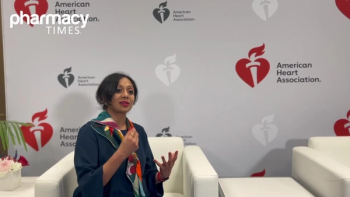
Type 2 Diabetes: Moving the Treatment Landscape Forward
Experts Javier Morales, MD, and Dhiren Patel, PharmD, CDE, BC-ADM, BCACP, reflect on the most prevalent unmet needs in the management of type 2 diabetes and share which up-and-coming treatment strategies most excite them.
Javier Morales, MD: Some of the unmet needs that we have when managing type 2 diabetes are not just trying to find the right combination of therapy to achieve the appropriate glycated hemoglobin (A1C) target but to further minimize some of the microvascular complications that these patients may experience. Some of these microvascular complications could actually drive up the cost of healthcare, which is also another unmet need that we’ve had. As we have newer generations of medications that come forth into the marketplace, they wind up being quite expensive and that could quite hinder the ability to use these agents in the appropriate patient type. Additional cardiovascular risk reduction is welcomed. In addition, an unmet need is how to preserve beta cell function. How do we keep these beta cells from deteriorating further? How do we stabilize glycemic control in the long-term patients with type 2 diabetes?
Dhiren Patel, PharmD, CDE, BC-ADM, BCACP: When we’re looking at type 2 diabetes, we’ve made a ton of progress in terms of looking at some of the unmet needs for folks. I think there’s one that’s still there, and it’s specifically related to heart failure. When we talk about patients with type 2 diabetes, there are probably 1 in 2 patients with diabetes who have a background of heart failure. A lot of these newer therapies have now started to look at heart failure, and there are a lot of the larger cardiovascular outcome trials where you’ve seen these endpoints included.
I think we need to take a more robust approach in looking at some of these comorbid conditions, specifically something like heart failure in cardiovascular disease, and in looking at the patient in a holistic manner and not just as, “I need to control your A1C” or “I need better glycemic control.” Looking at cardiovascular outcomes and looking at renal outcomes, I think there’s going to be a lot of value in looking at therapies not just for glycemic purposes and indications but also for managing the patient as a whole.
Javier Morales, MD: There’s a lot of ongoing research when it comes to managing type 2 diabetes, and different targets have actually been identified that could be helpful. Unfortunately, some of these newer targets have been not found to be fruitful, and as a consequence the research and development of these agents have been since suspended. Regarding the newer generation of agents when it comes to managing type 2 diabetes, products in development include flatter insulin profiles that may be offered in some of the conventional insulins that are used nowadays. There is even the use of different types of combinations of injectable products, and we are looking at di-agonist and tri-agonist classes and how they may actually offer improved efficacy and an even better weight profile.
Dhiren Patel, PharmD, CDE, BC-ADM, BCACP: When we look at what’s in the pipeline for type 2 diabetes, it’s actually quite exciting. We have medications currently in an injectable form, such as the glucagon-like peptide-1 (GLP-1) receptor agonists, that are being looked at for oral indications. There are studies that are being done, and some of them are coming out this year, that might allow the delivery of something that’s currently only available as an injectable in an oral formulation. That’s something that’s very exciting. Another thing that we’ve seen come out in recent months and years is improved newer-generation basal insulins that have a longer duration of action along with a better hypoglycemia risk profile. Those are some of the things that have recently come out and some of the things that are in the pipeline.
Newsletter
Stay informed on drug updates, treatment guidelines, and pharmacy practice trends—subscribe to Pharmacy Times for weekly clinical insights.















































































































































































































